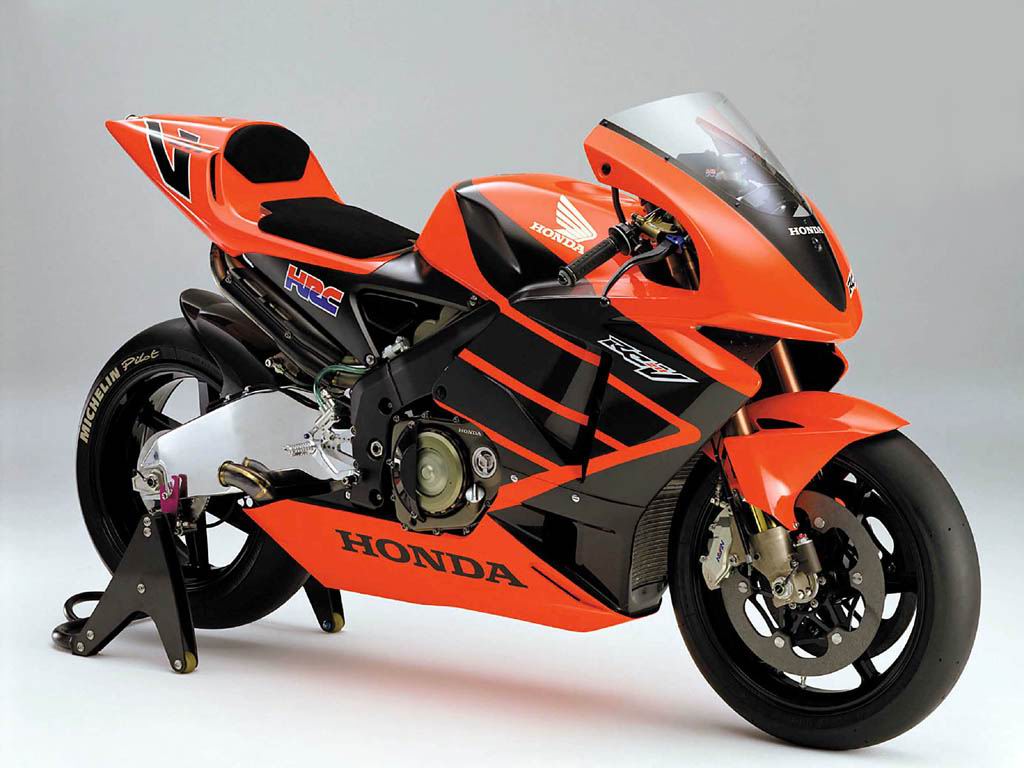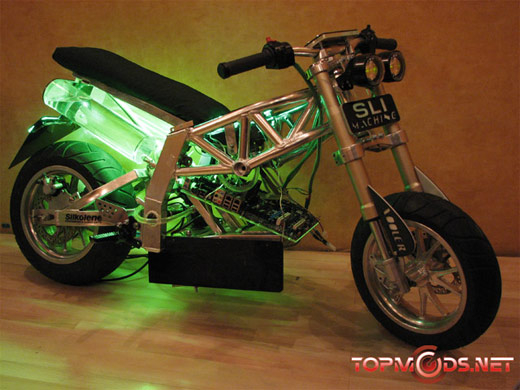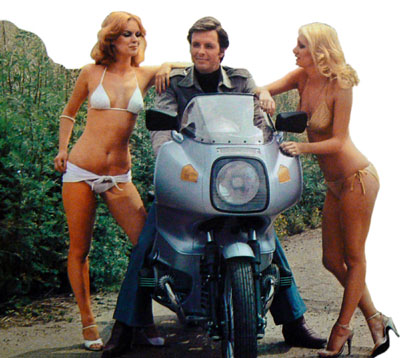 The world's largest vintage motorcycle auction is held annually in Las Vegas, hosted by MidAmerica auctions, this year at the South Point Hotel, Jan. 8/9/10. This is the 18th iteration of this event, and... I've never been before! It had always been my policy, prior to the last two years, to avoid auctions, for the simple reason that I was very likely to part with my money if I found something interesting. And what's not to find interesting at an auction of old motorcycles? Thus, I have never walked away without buying a motorcycle... to the temporary detriment of my finances/marriage at times, but it's always worked out in the end.
The world's largest vintage motorcycle auction is held annually in Las Vegas, hosted by MidAmerica auctions, this year at the South Point Hotel, Jan. 8/9/10. This is the 18th iteration of this event, and... I've never been before! It had always been my policy, prior to the last two years, to avoid auctions, for the simple reason that I was very likely to part with my money if I found something interesting. And what's not to find interesting at an auction of old motorcycles? Thus, I have never walked away without buying a motorcycle... to the temporary detriment of my finances/marriage at times, but it's always worked out in the end.But I'll be there this week, talking about the motorcycles as they're being auctioned away - not a bad gig. I may be a bit hoarse after 500 motorcycles pass under my nose, though.
Before the auction begins on Thursday night, I'll preview a few intriguing items.
 The complete catalog can be viewed here.
The complete catalog can be viewed here.Most interesting to me by a long yard isn't a motorcycle at all, it's a set of original working drawings for the ACE motorcycle. The story of the ACE is interesting in itself, being the product of the brilliant William Henderson, the designer of those elegant 4-cylinder motorcycles which bore his name from 1913-17. After several years of production, Henderson sold his interest to Ignatz Shwinn, the bicycle manufacturer, who merged the 'Henderson' with his existing 'Excelsior' models.

William Henderson signed a two- year 'non-compete' clause with the sale of his business, but even during this period began to design a new 4-cylinder motorcycle, the ACE. While the new Excelsior-Henderson was altered from his original layout by using a sidevalve engine, Wm. Henderson saw this as a retrograde step. The new ACE used an 'F-head' with overhead intake valves, a design with almost the same performance at that time as a proper ohv job. When his 'non-compete' clause with Schwinn expired, Henderson had a machine ready to show potential investors in his new company.

The ACE was the fastest motorcycle in the world when introduced in 1920, with a top speed of nearly 90mph. In December 1922, two specially tuned ACE racers were built by Arthur Lemon, the XP3 and XP4. The XP4, which used extensive magnesium and was basically a one-off, was timed at 129.61mph in Nov, 1923 (20mph faster than the 'official' World Record, by the Temple-Anzani, of 108.5mph).

Revered as they are among collectors, four-cylinder motorcycles in general proved a losing proposition for American manufacturers (although Nimbus and FN made a better go of it, among the early adopters). ACE production commenced in fits and starts, with changes of venue and investors, as the company struggled to establish itself. William Henderson was killed on December 11, 1922, while road testing an ACE, after being struck by a car. His assistant Arthur Lemon continued to work as chief designer on the new machine, until the company was purchased by Indian in 1926.

The drawings at auction are those produced by William Henderson himself, and are apparently all signed by him and Arthur Lemon. According to motohistorical lore, they languished in the Indian Co. archives, and were assumed destroyed after Indian went out of business in 1953. The current owner, Bill Melvin, claims to have found them being thrown in a dumpster. "After spending much of my adult life looking for this type of treasure, it was overwhelming to find what represents the finest work of the most renowned designer in American motorcycle history. To think they were headed for a landfill. When I found them, I had goose bumps for a week."
I will be very curious indeed to see what this historical treasure fetches; in a sensible world, they would equal the value of one of the motorcycles for which these drawings were produced, such is the rarity of original, signed drawings of this quantity and specific focus.










No comments:
Post a Comment